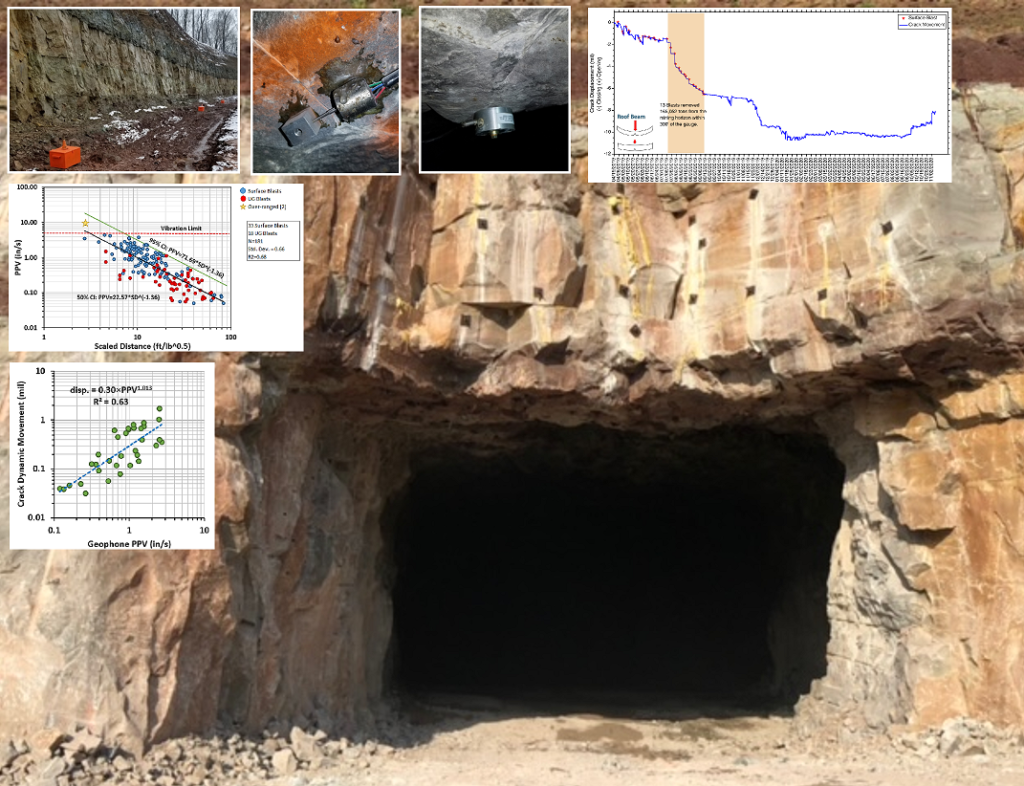GeoSonics/Vibra-Tech’s results of a study looking at roof stability in underground mines and tunnels where roof cracks are visible.
Cracks have a disruptive effect upon the integrity of rock masses and reduce the overall stability of slopes and tunnels. Cracks respond to transient dynamic and structural static loads as well as environmental loads caused by changes in temperature. They can also propagate and grow along the path of least energy depending on the mechanical properties of a domain, the geometry of cracks, and external loading. Therefore, the existence of roof cracks in underground mines and tunnels raises concerns regarding the stability of the roof. Very few studies have investigated the behavior of cracks in unlined tunnels over long periods of time, especially when such flaws are subjected to blast-induced vibrations.
In this study, the behavior of a roof crack in an underground mine was monitored over a period of several months. The mine management proposed three new access portals in the vicinity of the crack. Prior to any surface and underground blast, a vibration limit and a vibration monitoring plan was established to ensure the stability of the mine roof against blast-induced vibrations. As the blasting progressed, a vibration attenuation equation was developed using measurements from three borehole seismometers and one underground seismometer bolted to the mine roof. This attenuation relation was used to design/calibrate future blasts. Moreover, the dynamic response of the crack to blast-induced vibrations was studied using a crack gauge and the roof seismometer mentioned earlier. The crack gauge spanned across the crack and measured the short- and long-term changes of its width. The geophone measured the particle velocity in the vicinity of the crack. A positive correlation was found between the peak particle velocity and peak crack movement. Finally, the long-term response of the crack to blasting and stress redistribution was investigated. Long- term width measurements indicated that the crack closed up by less than 12 mils, equivalent of the thickness of six average hair strands, over the course of daylighting the new access portals.
The complete paper can be found in the July/August 2022 issue of The Journal of Explosives Engineering, a publication distributed by the International Society of Explosives Engineers.
Check out our Vibration Monitoring and Geotechnical Monitoring Services for more information.

Contact the Eastern Pennsylvania Office to learn more about this project.
